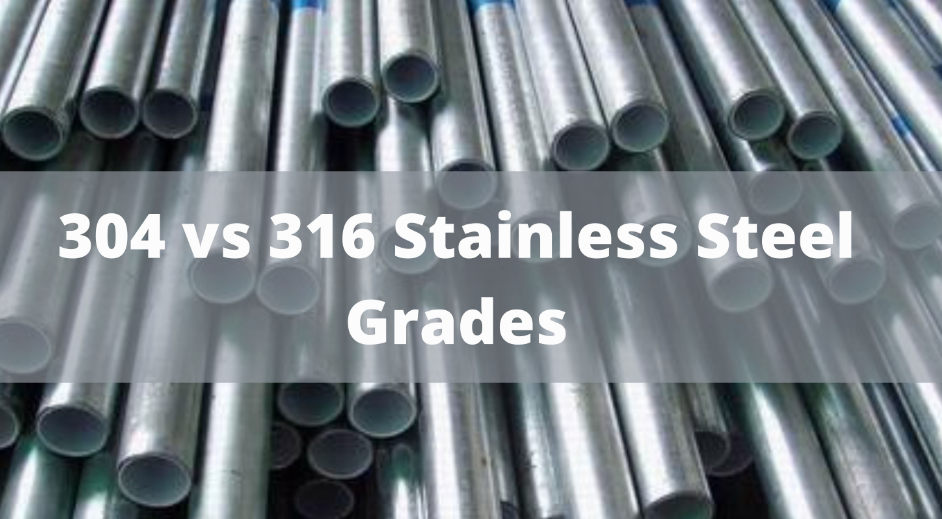Stainless steel has penetrated every aspect of our lives, and КСНУМКС нерђајући челик is widely known as food-grade stainless steel. Nowadays, businesses often promote КСНУМКС нерђајући челик, but what are the differences between 304 and 316 stainless steel? In this article, we’ll try to answer this question.

Stainless steel Is a Kind of Alloy Steel
The so-called “stainless steel” we usually refer to is actually called “rust-resistant acid-resistant steel”. To prevent steel from rusting, it is actually very simple to add some metal impurities to form an alloy steel (such as adding chromium). However, not rusting only means that it will not be corroded by the air, which is still too weak. Therefore, we also need it to be resistant to chemical corrosion, which is why “rust-resistant acid-resistant steel” was invented. To make rust-resistant acid-resistant steel, many types of metals need to be added, and different metal formulas form different types of stainless steel.
Both 304 and 316 Stainless Steel Are Austenitic Stainless Steel
Stainless steel is often classified by its structure into martensitic steel, ferritic steel, austenitic steel, austenitic-ferritic (duplex) stainless steel, and precipitation-hardening stainless steel. In addition, it can also be classified by its composition into chrome stainless steel, chrome-nickel stainless steel, and chrome-manganese-nitrogen stainless steel. Among them, austenitic stainless steel has the best comprehensive performance and is non-magnetic, so it is most widely used in our daily lives. 304 and 316 stainless steel are both austenitic stainless steel.
304 и 316 нерђајући челик
304 stainless steel has strong corrosion resistance and is classified as a “food-grade” metal by national standards, which means it is suitable for normal contact with water, tea, coffee, milk, salt, sauce, vinegar, etc. 316 stainless steel is a further upgrade based on this, with stronger corrosion resistance. It can resist various strong acids and alkalis in addition to salt, sauce, tea, etc. Moreover, 316 stainless steel has better adaptability to the environment, and its corrosion resistance is not affected by high or low temperatures. However, the production cost of 316 stainless steel is higher, resulting in higher prices.
Several Common 304 and 316 Stainless Steel Grades
- 304: i.e. 18/8 stainless steel. Products such as corrosion-resistant containers, tableware, furniture, railings, and medical equipment. The standard composition is 18% chromium and 8% nickel. It is a non-magnetic stainless steel that cannot be changed in its metallographic structure through heat treatment. GB brand is 06Cr19Ni10.
- 304 L: has the same characteristics as 304, but has lower carbon content and is more corrosion-resistant and easy to heat treat, but has poorer mechanical properties.
- КСНУМКС Н: has the same characteristics as 304, which is nitrogen-containing stainless steel that adds nitrogen to improve the strength of the steel.
- 316: After 304, it is the second most widely used steel grade, mainly used in the food industry, clock and watch accessories, the pharmaceutical industry, and surgical equipment. It adds molybdenum to obtain a special anti-corrosion structure. It is also used as “ship steel” due to its better corrosion resistance to chlorides than 304. SS316 is usually used in nuclear fuel recycling facilities.
- 316 L: Due to low carbon content, it is more corrosion-resistant and easy to heat treat, products such as chemical processing equipment, nuclear power generators, and refrigerant storage tanks.
резиме
Taking cost-effectiveness into consideration, 304 is sufficient for food-grade steel and has almost no defects. Using 316 for this purpose is overkill, as the extra strength provided by 316 compared to 304 is not appreciable. Therefore, consumers can choose products based on their needs and cost-effectiveness to make an informed decision on suitable products.
Thank you for reading our article and we hope it can help you know what are the differences between 304 and 316 stainless steel. If you want to find more information about 304 and 316 stainless steel, we’d advise you to visit Кинески нерђајући челик за више информација.
As a leading supplier of 304 and 316 stainless steel worldwide, Sino Stainless Steel provides customers with high-quality 304 and 316 stainless steel, stainless steel hexagon bars, топло ваљани котур од нерђајућег челика, обојени лимови од нерђајућег челика, нерђајући челик перфорирани листови, угаоне шипке од нерђајућег челика, хладно ваљане прецизне траке од нерђајућег челика, жица од нехрђајућег челика, и рељефне плоче од нерђајућег челика по изузетно конкурентној цени.
 : +86-18621535697
: +86-18621535697  :екпорт81@хуакиа-интл.цом
:екпорт81@хуакиа-интл.цом